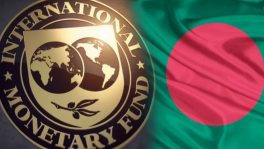Rohingya: Life and struggle in exile
In August 2017, Myanmar government launched the fiercest of its series of military offensives against Rohingya people living in the Rakhine state, leading to the largest human displacement in Asia since the Vietnam War.

Systematic oppression, mass killings, rape, arson- Rohingyas had it all in their own land. In what United Nations later dubbed a "textbook example of ethnic cleansing," their homesteads were burned to ashes, villages bulldozed to the ground to erase the last signs of an entire nation.
Since then, about one million Rohingya people have been living in the sprawling refugee camps in Cox's Bazar district of Bangladesh.

Rohingya people became Rohingya refugees.

While Rohingyas were driven away by their own country's military with explicit support from Myanmar's de facto leader- a Nobel laureate of international acclaim, they were given shelter by a quite uncelebrated people living in the fringe. The first responders to the massive influx of refugees were local villagers, farmers, boatmen, small traders and madrassah students and teachers, who welcomed the Rohingyas with a wide open heart, and treated like brothers.
The whole country soon joined hands to help. Groups of people from all quarters- students, professionals, civil society organisations- rushed in with truckloads of food and other relief material.
It was a mess in the beginning.

Thanks to quick government response and support from international community, Rohingya refugee camps in Ukhiya and Teknaf are now well organised, giving Rohingya refugees a bit of respite as they long for returning to the motherland.

Acclaimed photographer Rahul Talukder gives you a glimpse into the life and struggle of Rohingya people- from their arrival in Bangladesh to today's camp life.

Rahul's photos remind us that Rohingyas are not just refugees. They are people. Just like ourselves!
Rahul Talukder is a freelance documentary photographer. In 2014, he won World Press Photo Award in the Spot News story category for his story 'Collapse of Rana Plaza'. He also won a number of other awards and grants. His works have appeared in New York Times, Wall Street Journal, The Guardian, Sunday Times and many other international media.


 Keep updated, follow The Business Standard's Google news channel
Keep updated, follow The Business Standard's Google news channel













